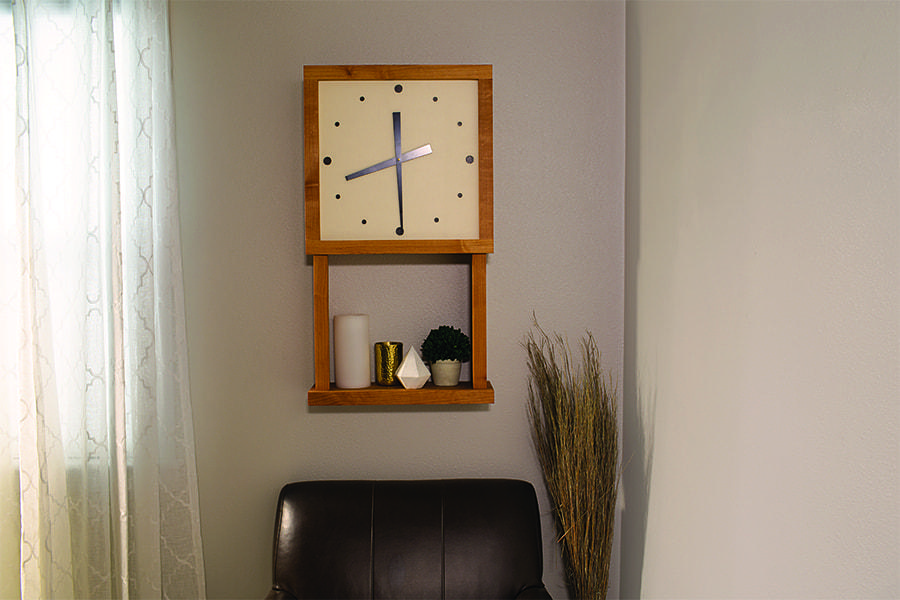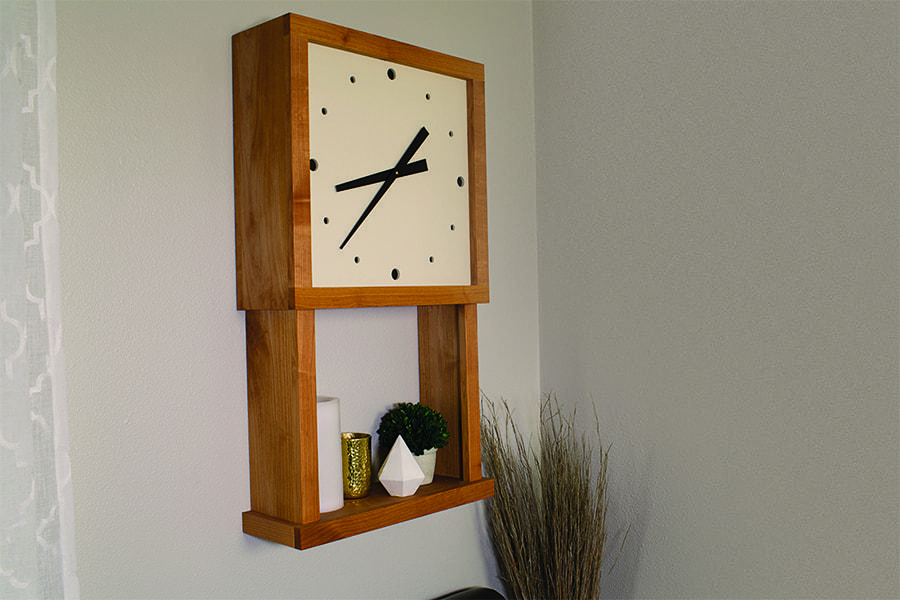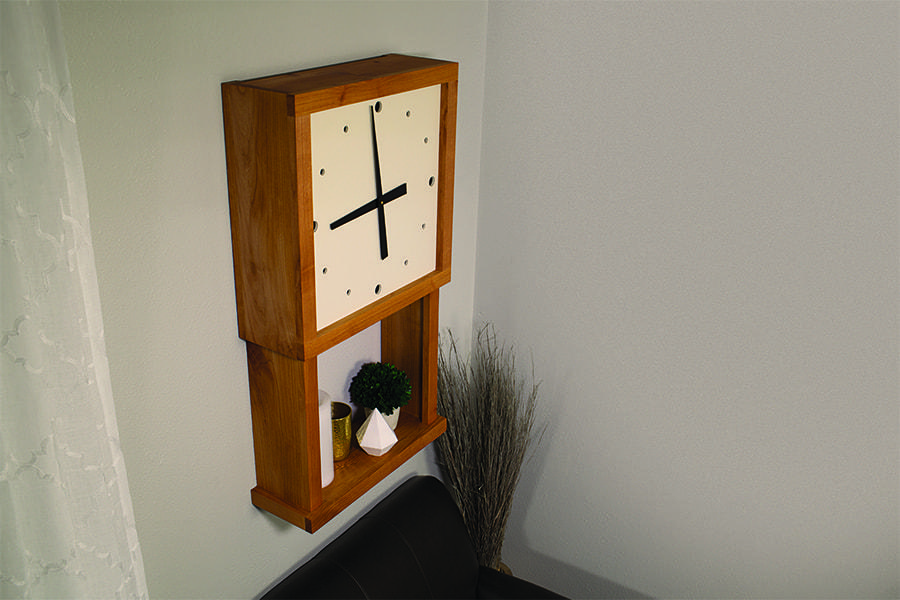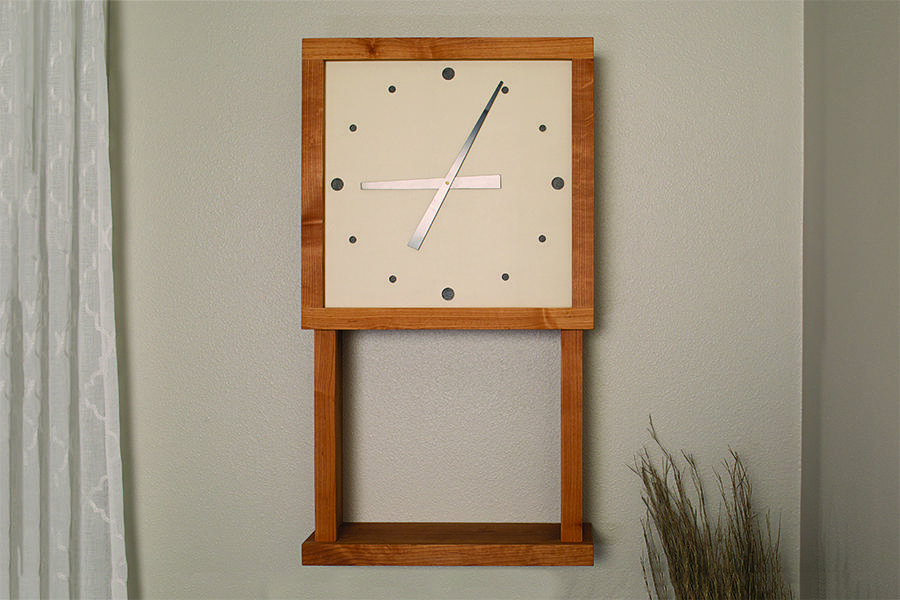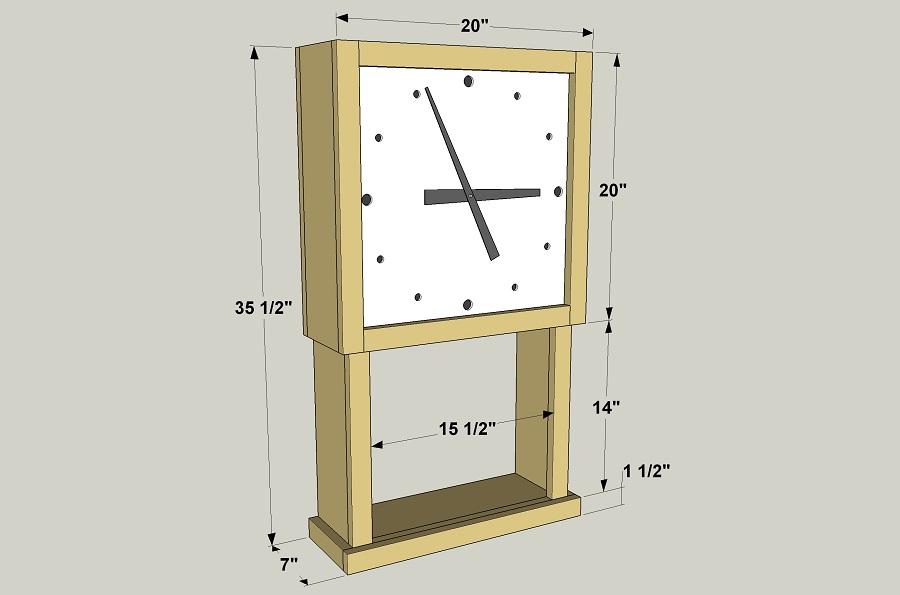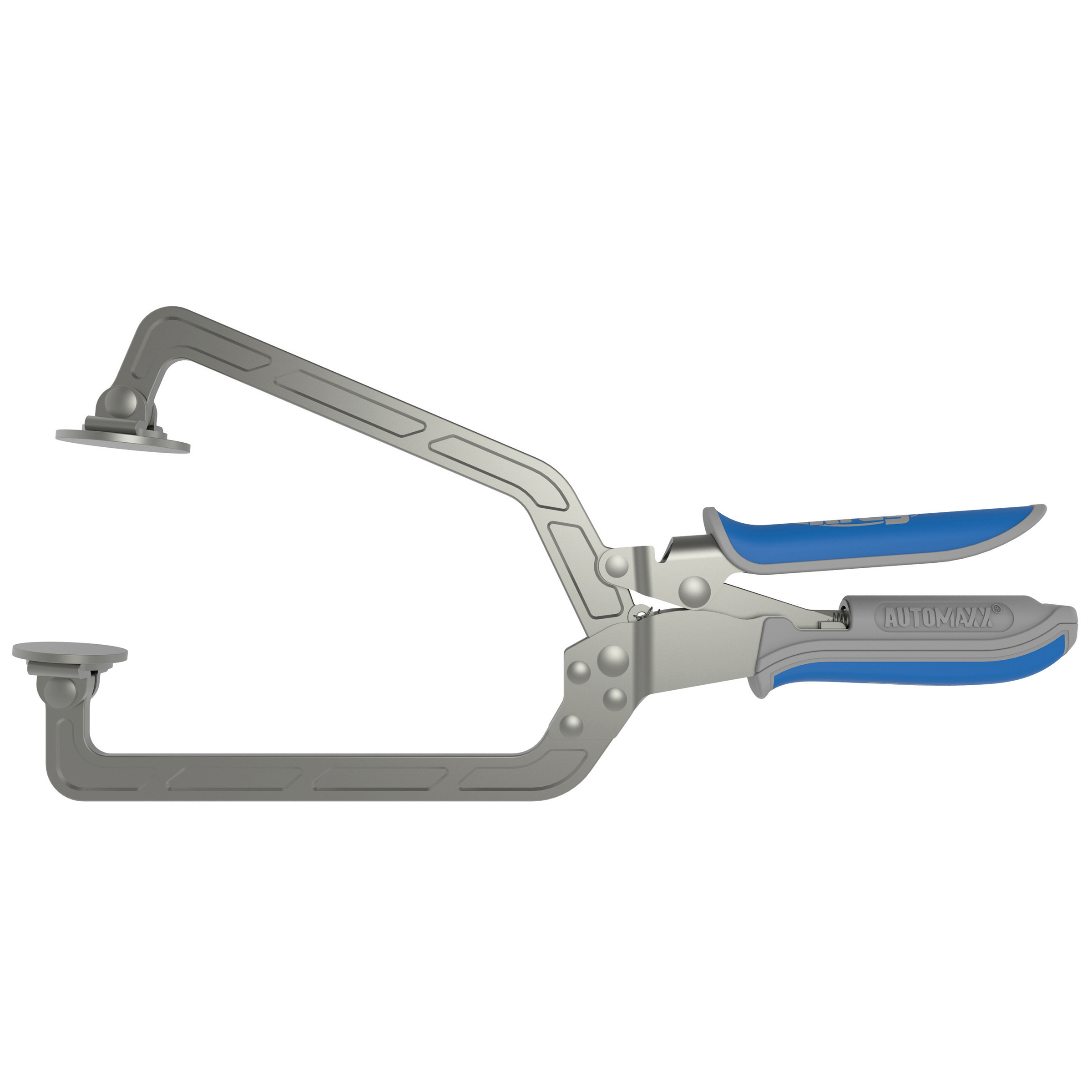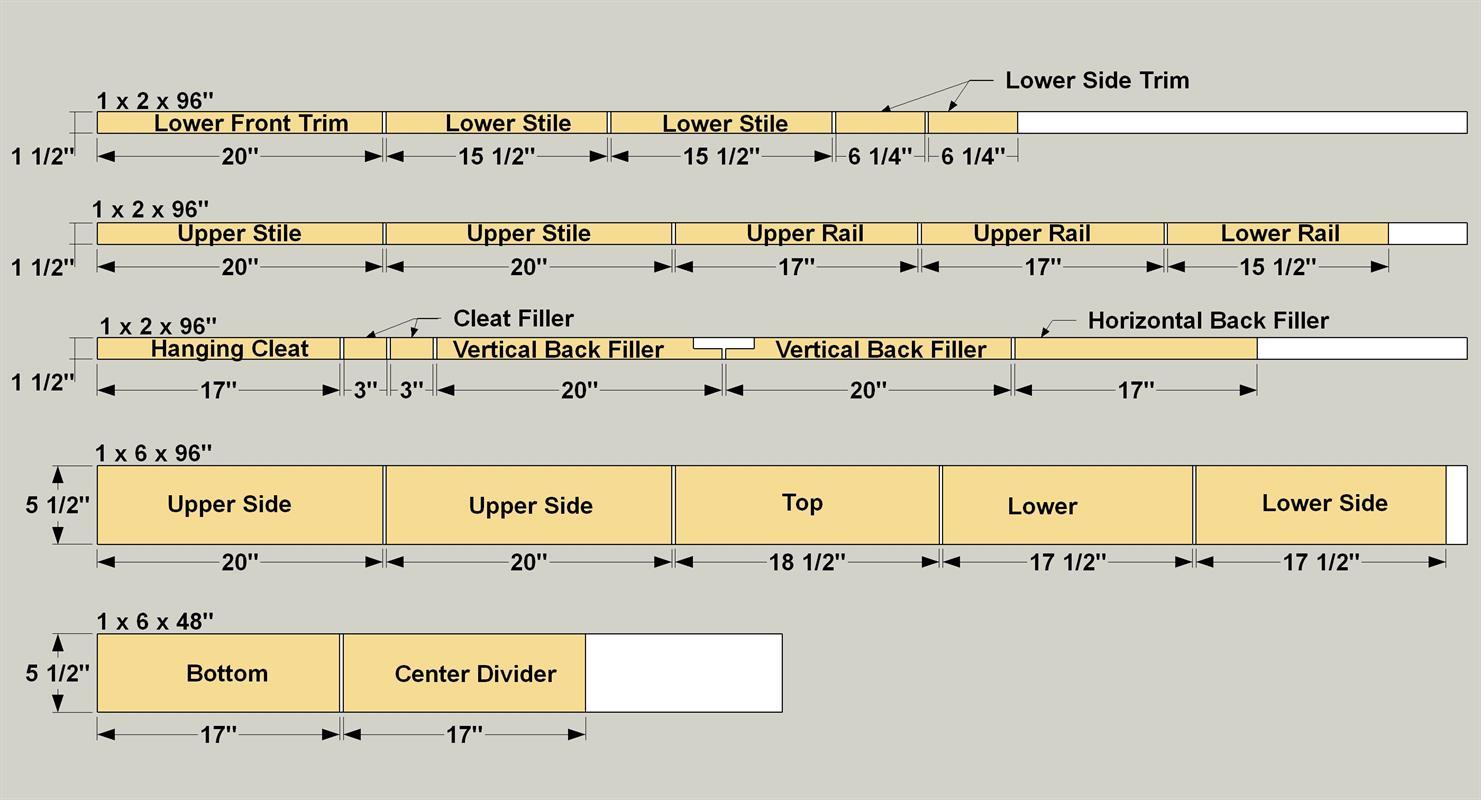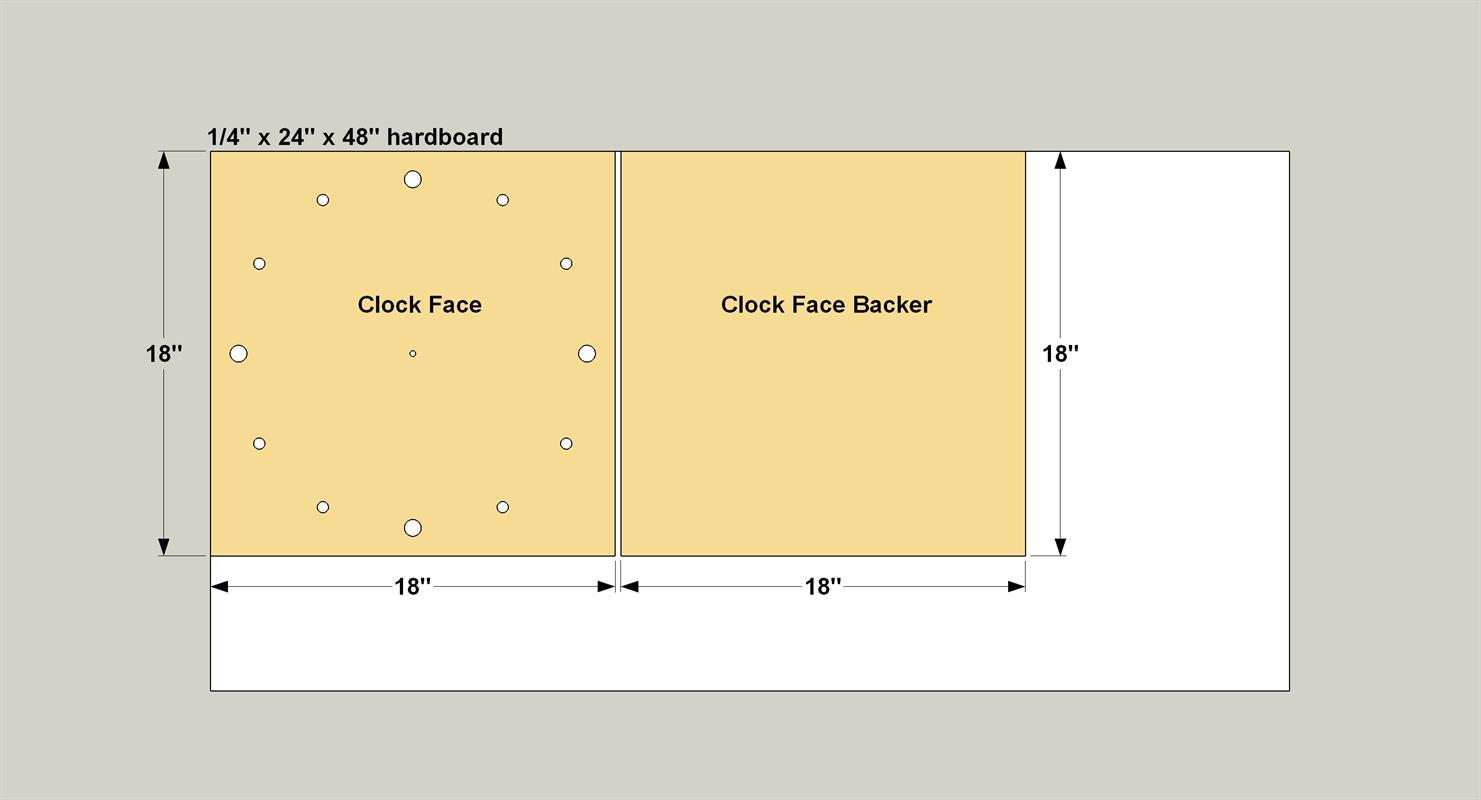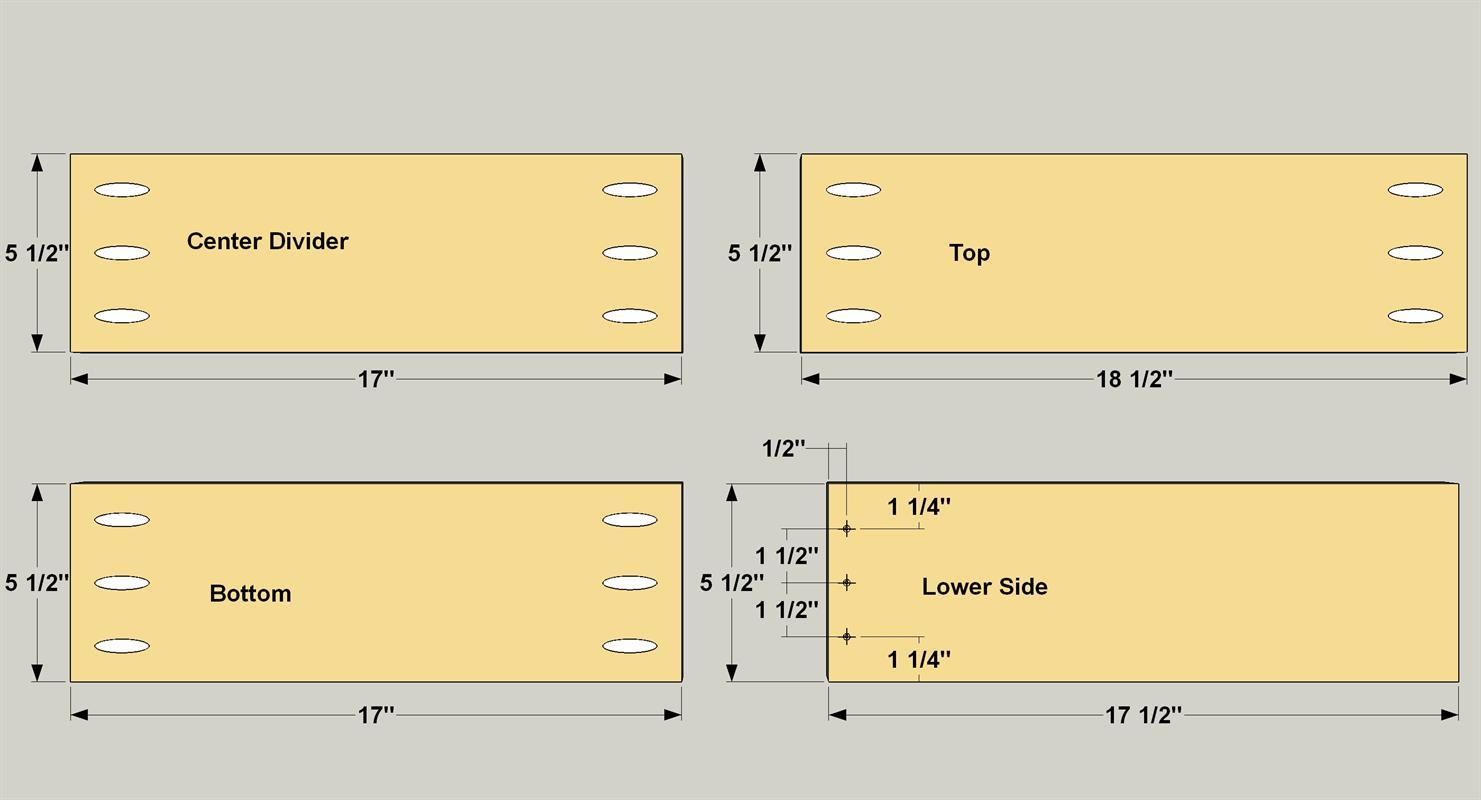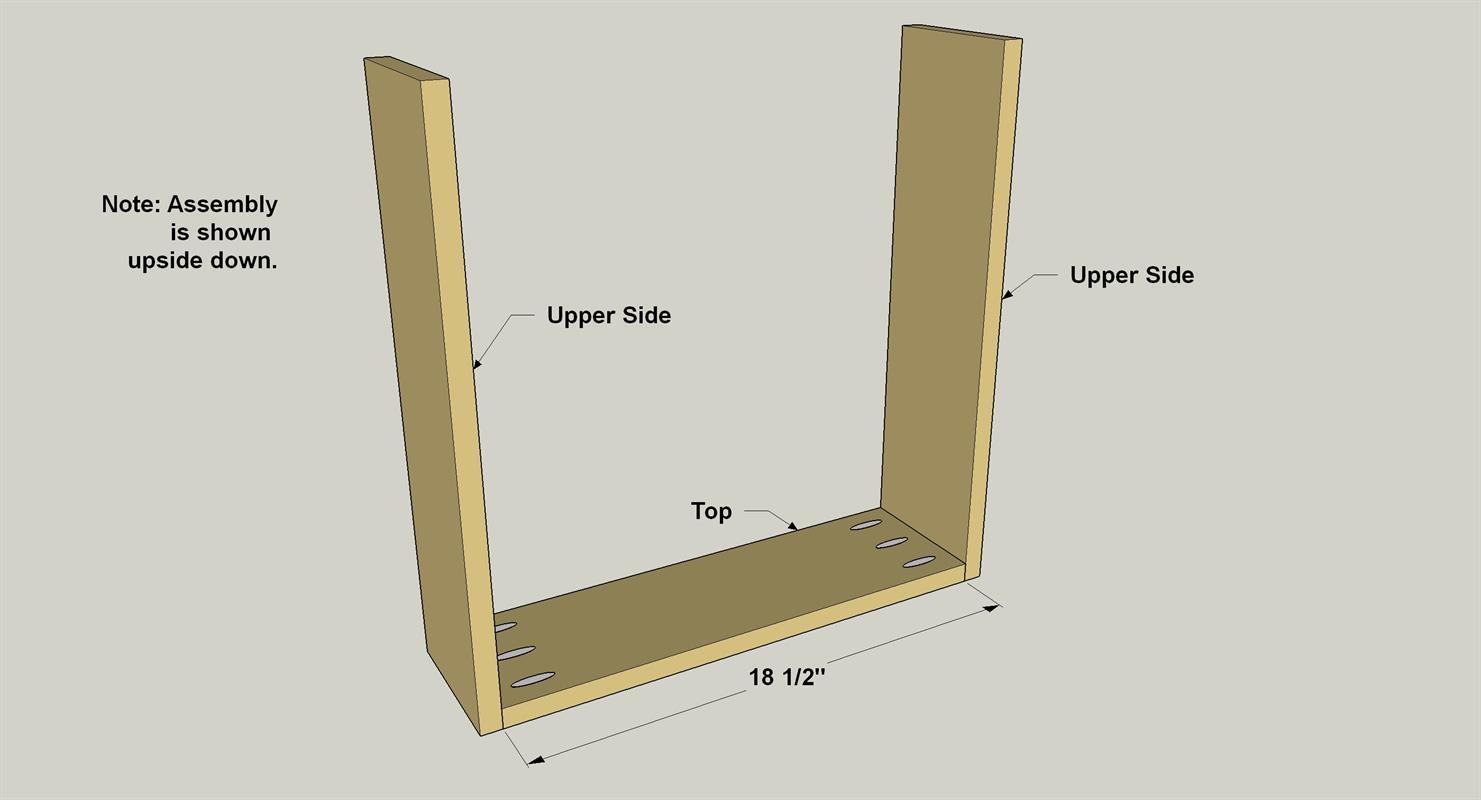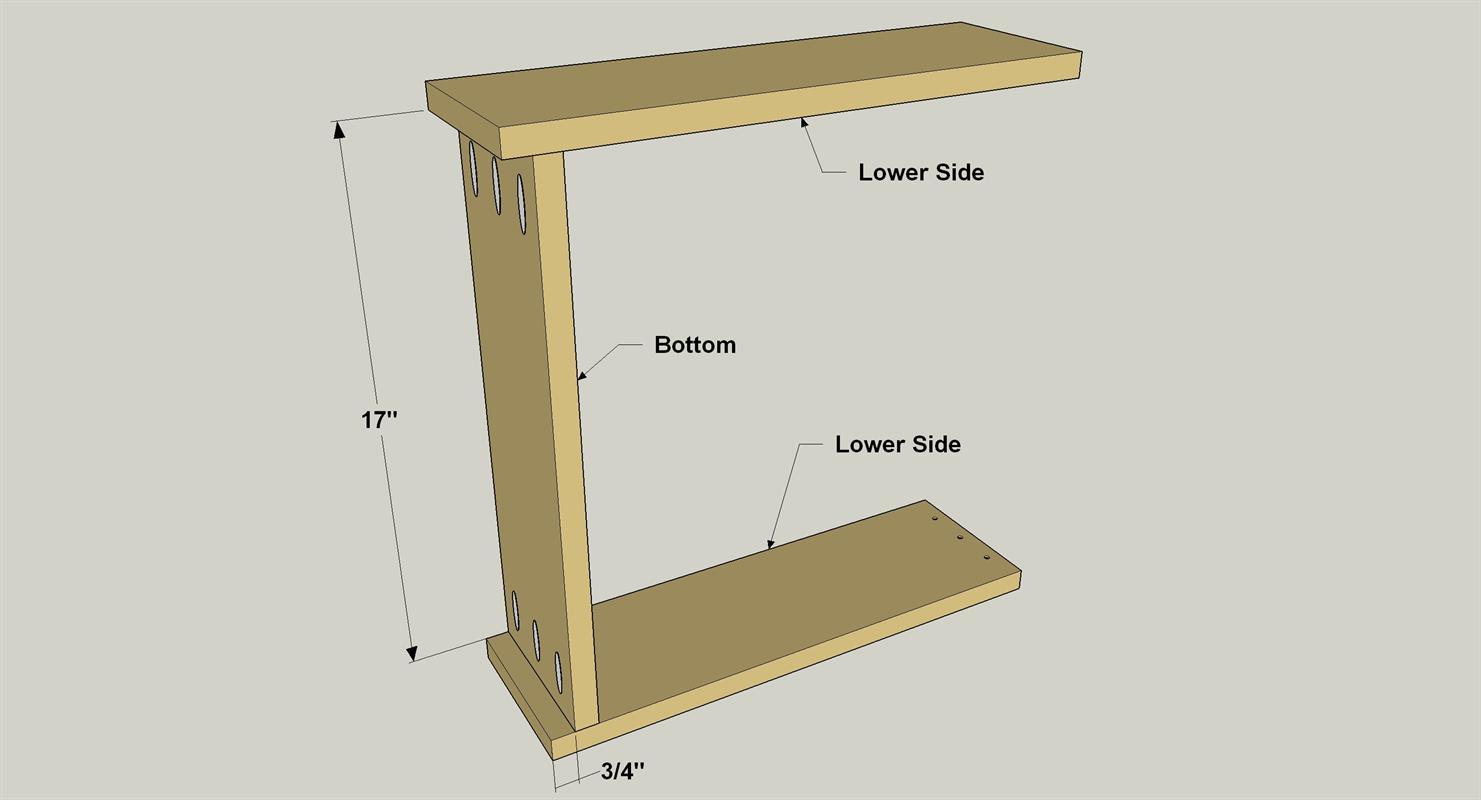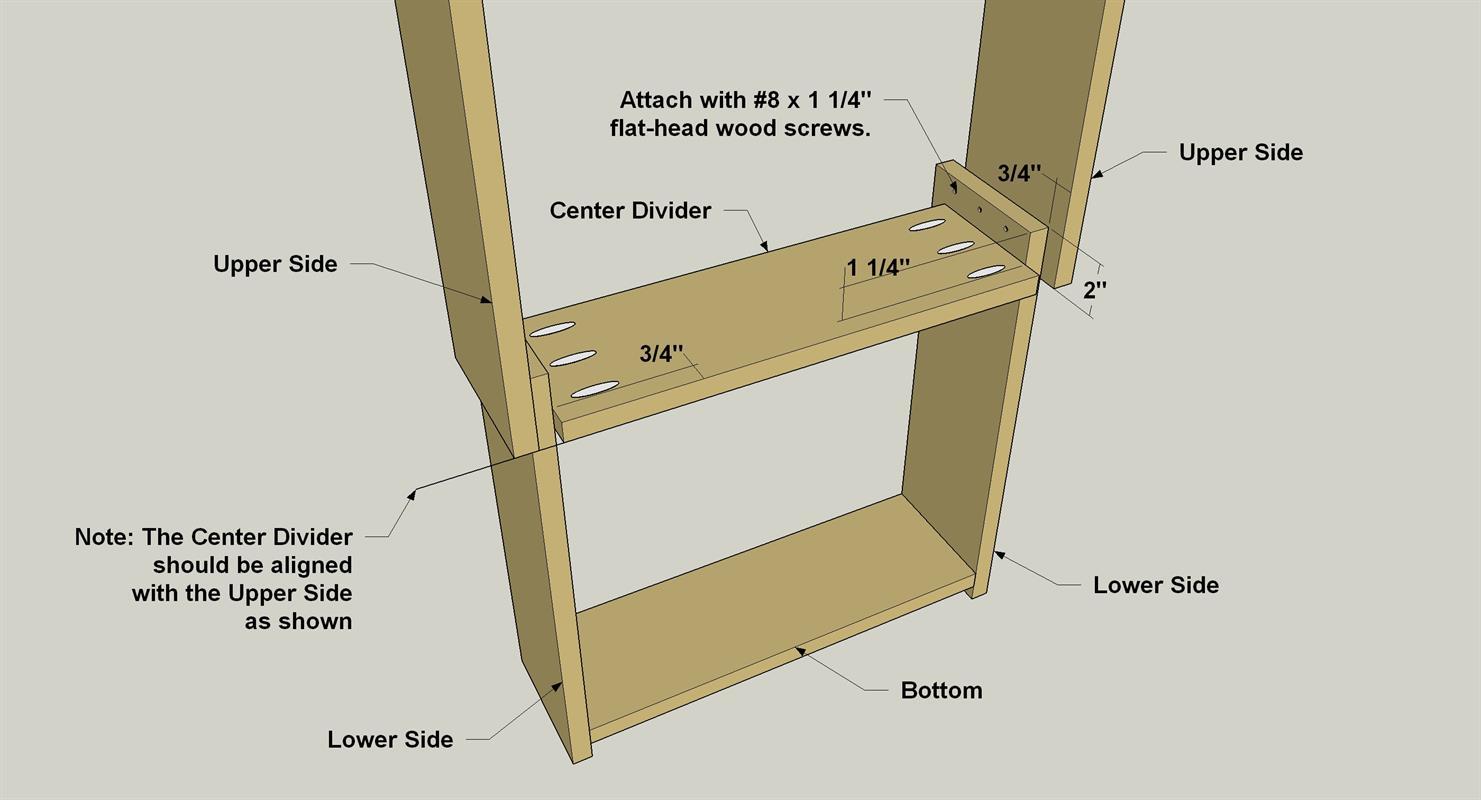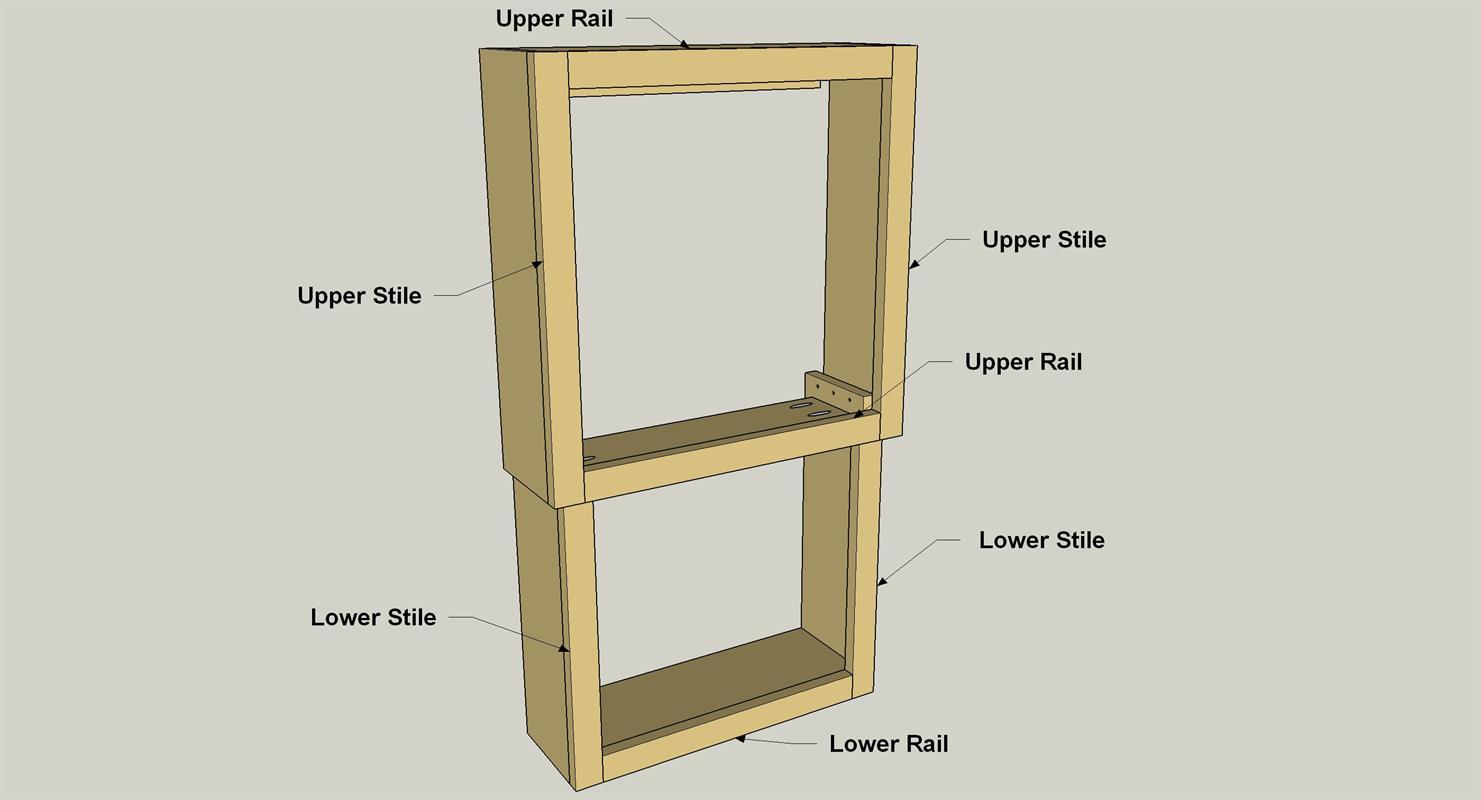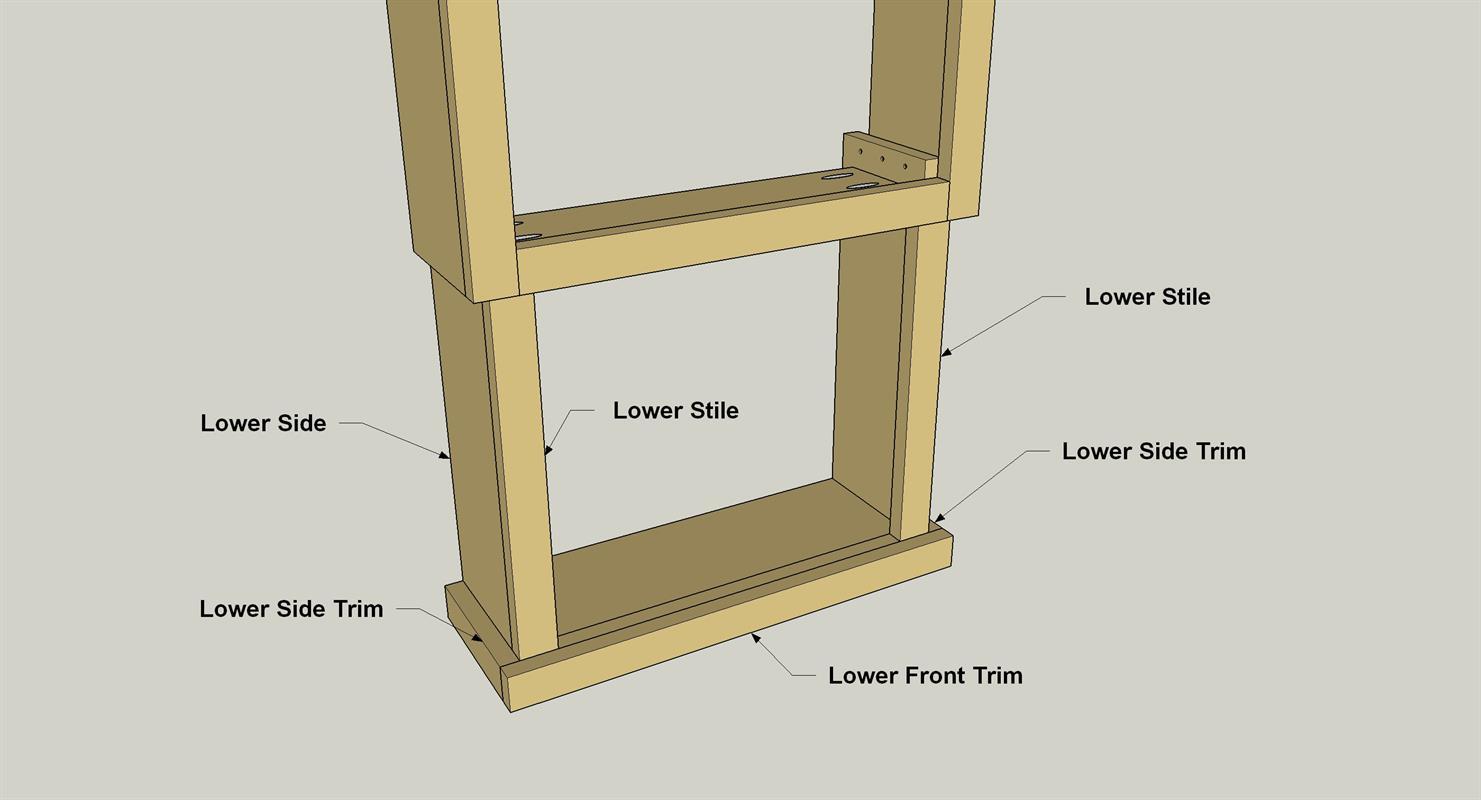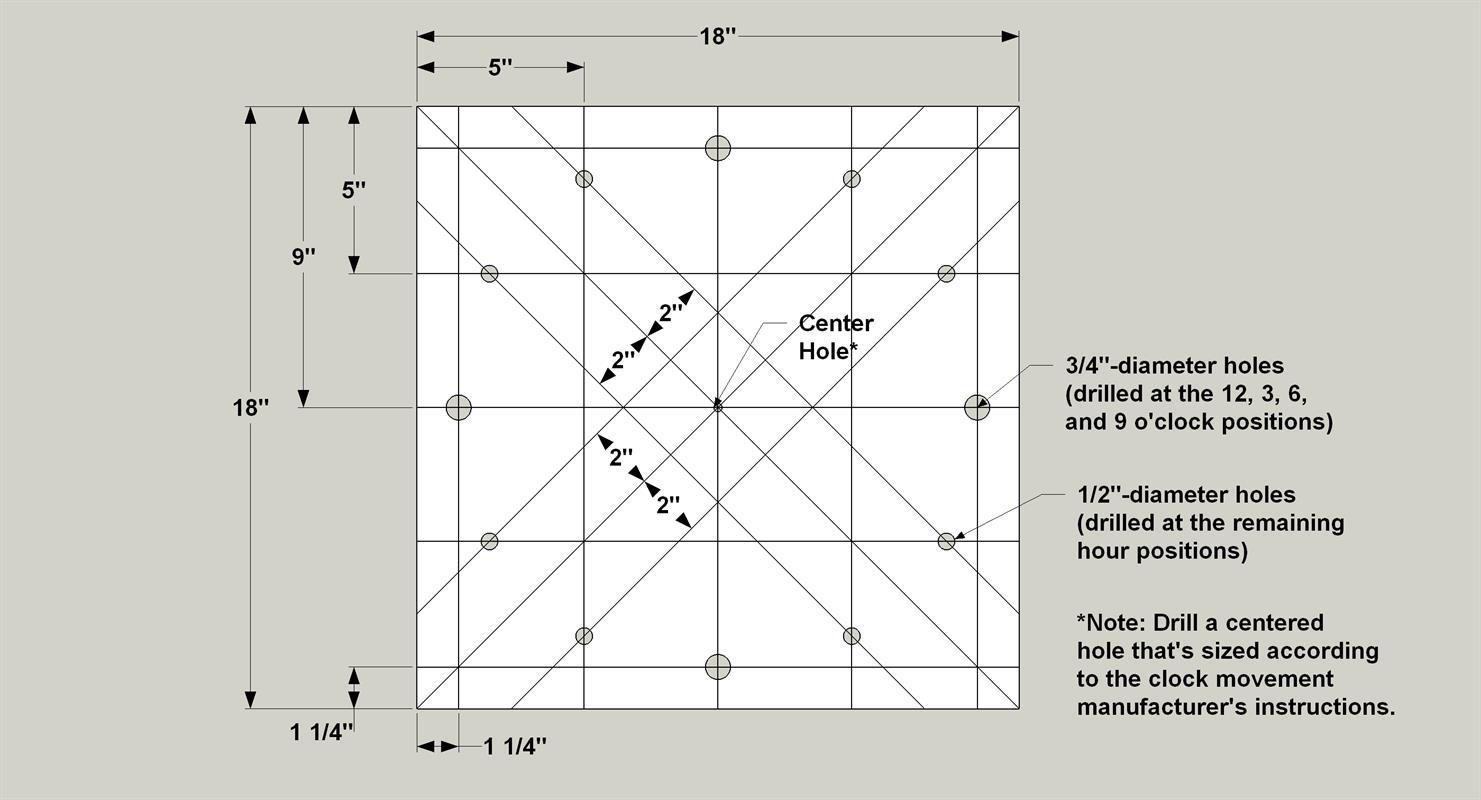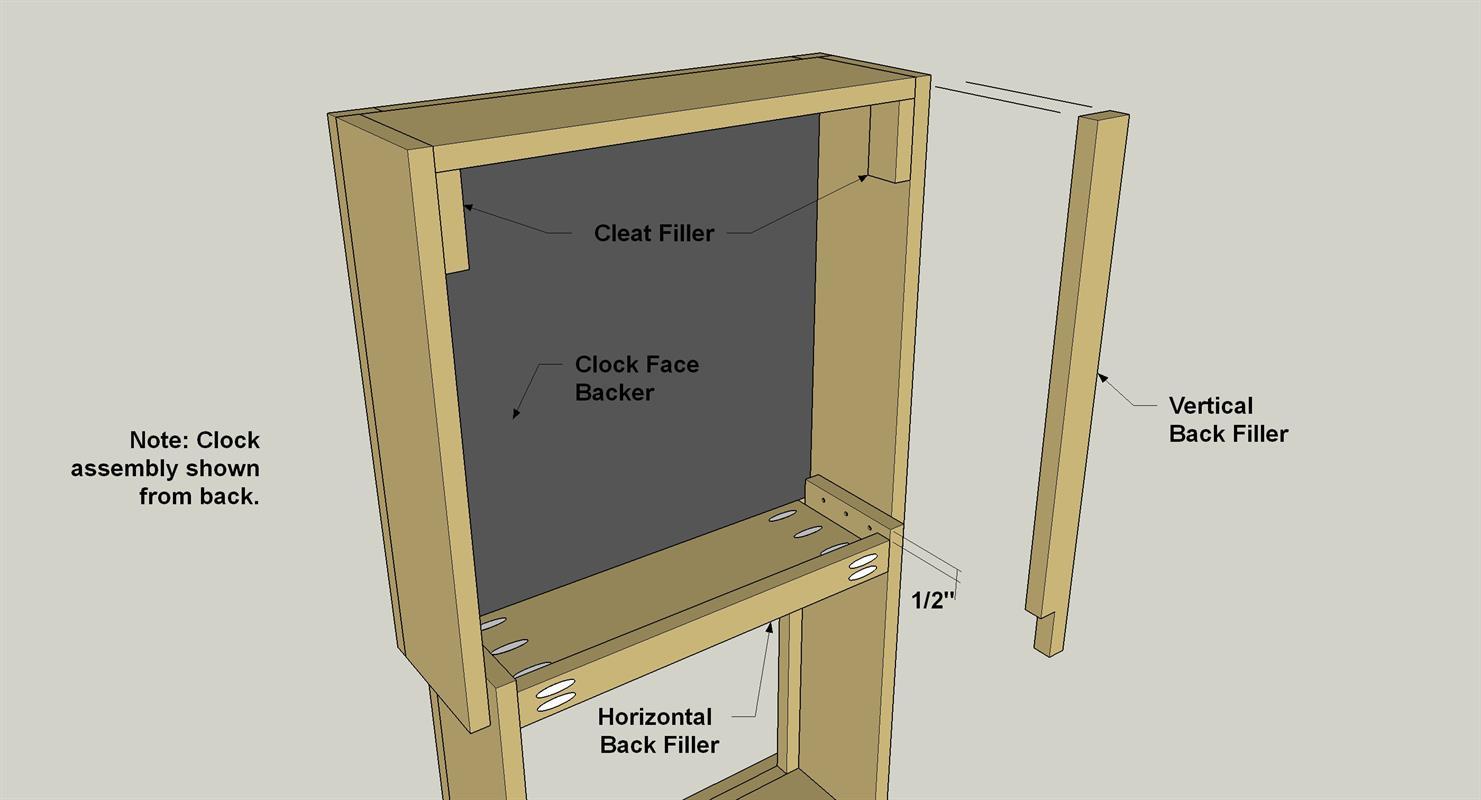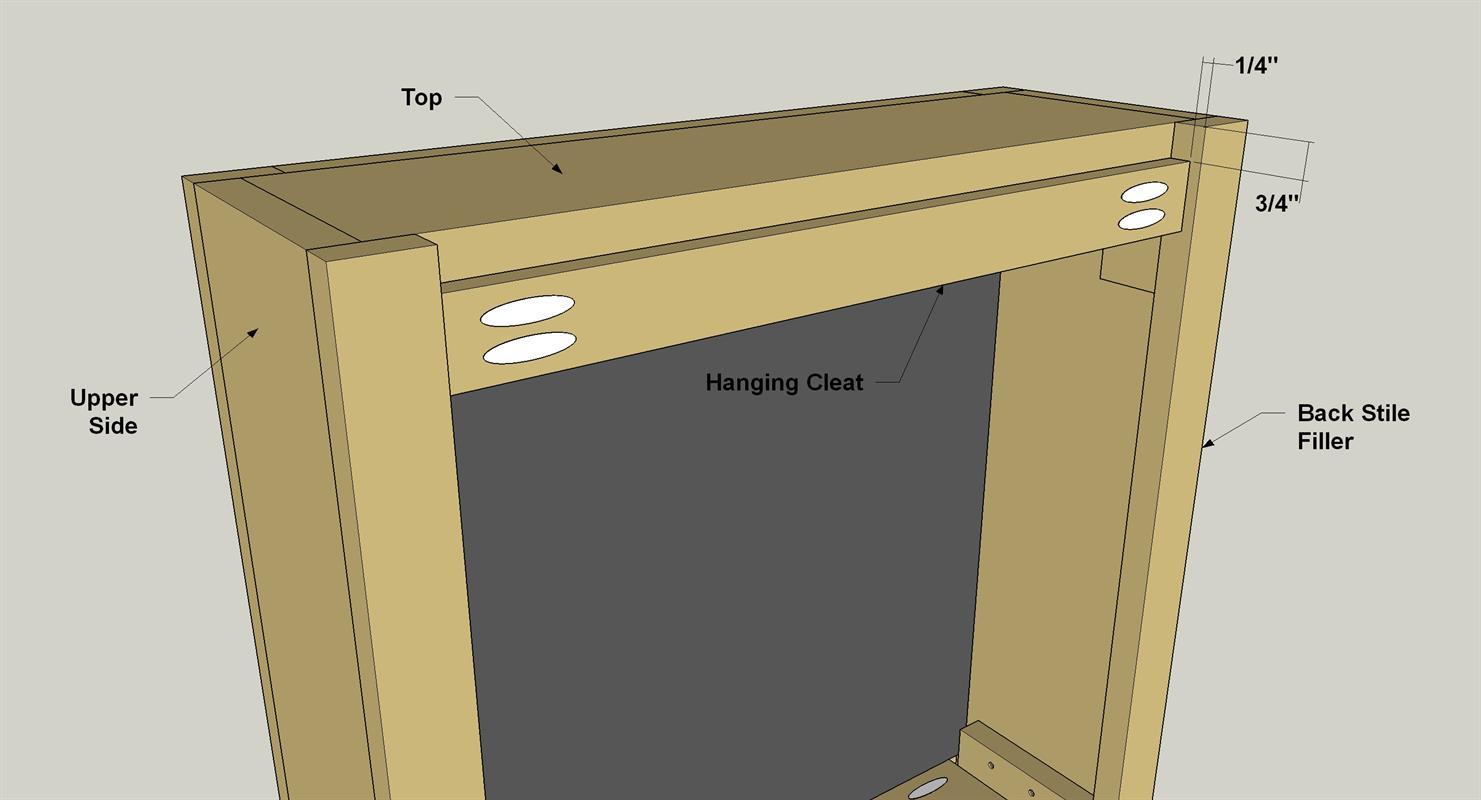Wall Clock with Display Shelf
By Kreg ToolThis wall clock has a transitional style that can work in traditional or modern environments, and it offers a shelf for displaying small objects, as well. The case is made from ordinary boards, and the face is easy to make. The heart of the clock is a simple battery-powered quartz movement.
Directions
-
Cut the Main Case Parts
Cut two Upper Sides, two Lower Sides, one Top, one Center Divider, and one Bottom to length from 1x6 boards, as shown in the cut diagram. We used a hardwood called Alder, which one of our local home centers had available in dimensional sizes. You could use any species that’s available in the 1x2 and 1x6 sizes needed, such as maple, oak, pine, or poplar. With the pieces cut, set your pocket hole jig for 3/4"-thick material, and then drill pocket holes at the locations shown on the Top, Center Divider, and Bottom. Near one end of the Lower Sides, drill three 1/8" countersunk pilot holes where shown.
-
Make the Upper Assembly
Attach the Top to the two Upper Sides, as shown, using 1 1/4" fine-thread pocket-hole screws.
-
Make the Lower Assembly
Attach the Bottom to the two Lower Sides, as shown, using 1 1/4" fine-thread pocket-hole screws. Note that the Bottom sits up 3/4" from the ends of the Lower Sides.
-
Bring the Assemblies Together
Position the upper assembly on the lower assembly, making sure that the upper assembly overlaps by 2" as shown, and that the upper assembly also sits 3/4" forward from the edge of the Lower Sides. An easy way to do this is to lay the lower assembly on a flat surface, and then lay the upper assembly in place sitting on a couple of 3/4"-thick scrap spacers. Once the assemblies are aligned, clamp them together, and then drive three #8 x 1 1/4" flathead screws through the lower sides into the upper sides. Then you can add the Center Divider. Notice that it’s also offset from the ends of the Lower Sides, and that it sits flush with the front edge of the upper assembly.
-
Cut the Rails and Stiles
Cut two Upper Rails, two Upper Stiles, one Lower Rail, and two Lower Stiles to length from 1x2 boards, as shown in the cutting diagram.
-
Glue on the Rails and Stiles
Now you can attach all of the Rails and Stiles to the front edge of the clock case assembly. We simply glued them in place, and clamped them until the glue dried. See the Tip below for some advice about how long to leave the clamps.
Know When to Remove Clamps
When you’re using just glue to hold pieces together, clamps are essential for holding things together while the glue dries. Thankfully, wood glue will usually dry enough to remove the clamps in a matter of 15 minutes or so. It will take much longer for the glue to completely set, but after once the glue dries enough to remove the clamps, you can handle your project—using a bit of extra care—and keep working without having to wait too long for the glue.
-
Cut and Install Lower Trim
Cut two pieces of Lower Side Trim and one Lower Front Trim to length from 1x2 boards, as shown in the cutting diagram. Then glue the trim pieces in place, as shown. Again, clamp them until the glue dries.
-
Make Back Fillers and a Cleat
Cut two Vertical Back Fillers, one Horizontal Back Filler, one Hanging Cleat, and two Cleat Fillers to length from 1x2 boards, as shown in the cutting diagram. On each Vertical Back Filler, lay out the notch as shown, and then cut it using a jigsaw. Sand the cut edges smooth. With your pocket-hole jig set up for 3/4" material, drill pocket holes in the Horizontal Filler and Hanging Cleat at the locations shown.
-
Make the Clock Face
Cut one Clock Face and one Clock Face Backer to size from 1/4"-thick hardboard, as shown in the cutting diagram. In the Clock Face only, lay out the grid as shown, and then drill the holes marked at all of the hour locations. Also drill a center hole for the clock movement’s stem according to the manufacturer’s instructions. Drill a matching centered hole in the Clock Face Backer. Then you can paint the Clock Face and Backer. We chose white for the Face, and black for the backer. After the paint dries, glue the pieces together to create your finished clock face. Make sure you don’t get glue too close to the holes so it can’t squeeze out and show through them.
-
Install the Face and Fillers
You can start final assembly by installing the clock face. Apply a small bead of glue around the inside of the Upper Rails and Stiles, keeping the glue near the outside. Then slip the face into place. You can lay the whole clock facedown, and weight the face until the glue dries. While that’s happening, install the Horizontal Back Filler using 1 1/4" fine-thread pocket-hole screws. Then glue in the Cleat Fillers and the Vertical Back Fillers.
-
Install the Cleat and Add a Finish
To complete the assembly of your clock, install the Hanging Cleat. Notice that the Cleat slips in under the Top, and gets set in 1/4". That’s to accommodate the thickness of the “Hangman” hanging system we used. With the Cleat in, all that’s left to do is apply the stain or finish of your choice to the clock case. Mask the clock face to prevent getting finish on the white paint. We chose a natural oil finish to complement the color of the Alder wood we built with. After the finish dries, install the hanger according to the manufacturer’s instructions, mount the clock movement and hands, and then hang your beautiful new clock on the wall.



